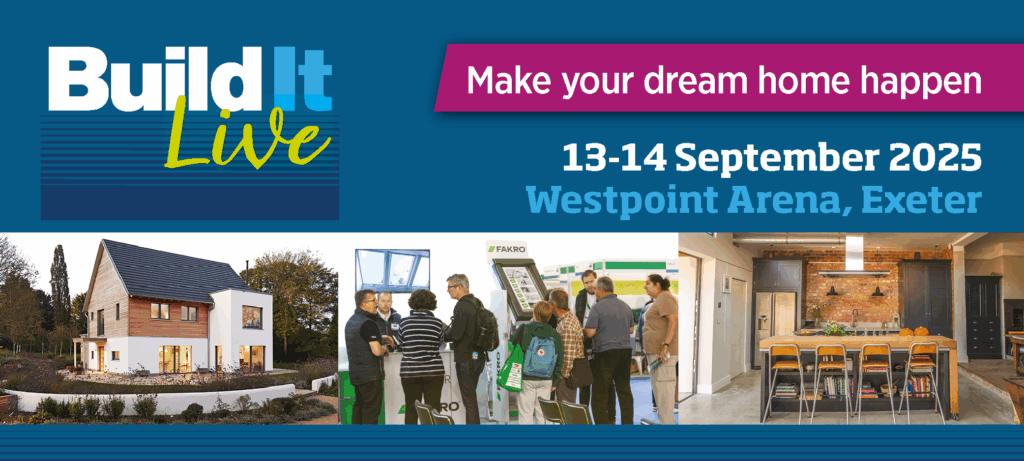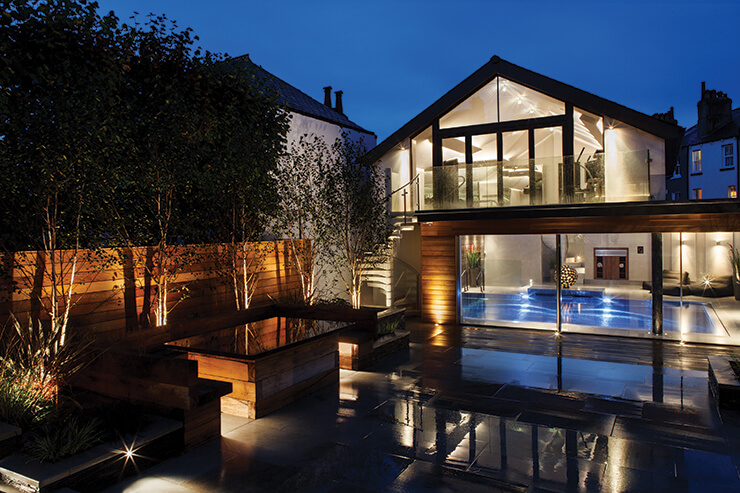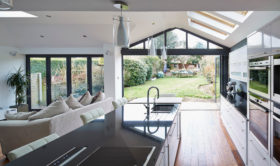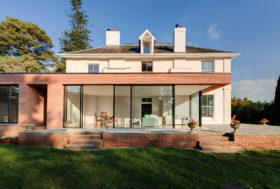
Let us help at Build It Live
Claim your two free tickets here!
Let us help at Build It Live
Claim your two free tickets here!Not so long ago, sleek automated gadgets were reserved for the hi-tech lairs of Bond villains alone. However, a growing number of people are now incorporating the latest tech into their living spaces, from integrated heating and lighting schemes to top of the range security systems.
A well-conceived lighting arrangement operated by smart controls not only oozes wow factor, but it can also help you achieve the perfect ambience at the mere flick of a switch or swipe of a touch screen. Multiple lighting scenes can be pre-set and operated via wall-mounted keypads, remote controls and mobile devices.
A properly designed system can also offer savings on energy bills. “You can ensure that only certain circuits are used for each scene rather than having everything on at once,” says Rebecca Crawford, senior designer at John Cullen Lighting. “You’re also able to set the level at which lights come on – in many cases a brightness of 80% is enough.”
While the prospect of dimming the lights from the comfort of your sofa may be appealing, a pre-programmed setup will not be able to create effective scenes on its own.
“Plan the illumination separately from the controls,” says Iain Shaw, partner at Brilliant Lighting. “If the design is dull, the addition of an automated system won’t make it more interesting. If the fittings can’t achieve the moods you want, there’s nothing smart controls can do to change that.”
As a first step to putting together a cohesive layered lighting scheme, it’s important to establish exactly how you plan to use the zone. For example, if your kitchen is to be an area for food preparation, eating and entertaining guests, you may want to pre-set scenes that utilise different fittings for each occasion. Next, choose the focal points you want to highlight. “You can use light to draw the eye away from a certain area in the room if you don’t want people to focus on it,” says Iain.
If you’re self-building or renovating, it can be tempting to put off the lighting design in the face of what can feel like much bigger, more pressing decisions about the project. However, bespoke automated schemes require different cabling architecture to conventional systems, so it really is essential to fully map out the design before the electricians arrive to install the wiring. Centrally-located dimmer panels and data processors, for example, will need to be factored in from the early stages of your project.

Brilliant Lighting has installed a series of subtle accent lights throughout this garden to illuminate key focal points. This allows people in the pool and gym complex to enjoy the landscaped exterior after sunset
With the majority of smart control systems, a wall-mounted keypad will be placed in each room in much the same place that you would install a conventional switch. This communicates with a central control hub, which is wired to dimming and switching modules throughout the property.
This control hub processes the data and issues commands to set the lighting in different zones. “You need to ensure there are plenty of circuits to create different atmospheres,” says Rebecca. “Take a kitchen-diner, for instance – it’s quite normal to have eight or so different circuits operating within the single zone. A good general rule is to have peripheral lighting on one circuit so you can keep your main ambient light separate.”
Accent lighting is used to illuminate key focal points, such as pieces of artwork or furniture, around the room. This is usually wired on different circuits to save energy when all the loops are not being used (to learn more about the three main types of lighting, see the box overleaf).
An alternative would be to use a wireless system to reconfigure the lighting. “This technology is advantageous because it can be added to a property at any point without the added cost of cabling or the need for replastering,” says Jessica Duran from Fibaro.
The convenience of being able to operate lighting via multiple interfaces is one of the main attractions of a smart system. “It’s not a case of choosing between one or the other,” says Matthew Tillman, managing partner at Tillman Domotics. “Most properties with integrated home tech will have a mix of touch screen panels and other devices. Tablets and phones are great for remote operation, but you’d still want a guest to be able to access the lights without having to ask for your iPad!”
While it’s possible to commission standalone automated systems for heating, lighting, audio-visual and security, you will almost certainly want to access all of them from one user-friendly interface. An integrated system can also offer a range of additional benefits. “You could have a ‘good night’ button next to your bed that turns off all the lights and televisions, as well as locking your front gates,” says Iain.
Motion sensors are often used in standard home lighting arrangements as a way of saving energy, switching fittings off automatically when no one is in the room. Wireless technology, such as Fibaro’s Home Intelligence System, allows homeowners to incorporate motion sensing into their setup.
If you want to experiment with dimming and other basic lighting functions in your living space, you can buy products that will allow you to do this for as little as £100. However, these won’t give you the same degree of control as a whole-house system. A full design, supply and programming package for an entire dwelling will typically start from around £10,000 – depending on the size of the property and the spec you’re going for.
In larger homes with more complex layered systems, the sky is the limit when it comes to price. “The initial investment for most automation systems is the controller, which handles the decision-making element. Once you have paid for this initial outlay, the scheme can be added to quite easily,” says Jessica.
If you’re working to a tighter budget or want to get more hands-on, some lighting companies offer workshops that will put you on the right track to designing the scheme yourself. These usually cost around £50-£150.
Above: John Cullen Lighting used square double LED downlights to complement the contemporary feel of this open-plan family kitchen


Comments are closed.